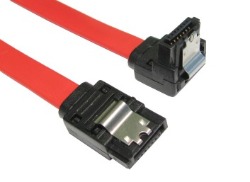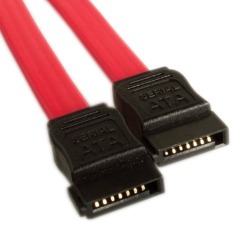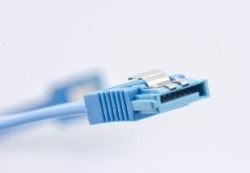


A SATA (Serial ATA) cable is a high-speed data cable used to connect storage devices, such as hard drives and solid-state drives (SSDs), to a motherboard or host controller in a computer system, providing fast data transfer rates and reliable connectivity.
Structure and Components
The data wires are responsible for transmitting and receiving data signals, while the ground wires ensure proper signal integrity and minimize electrical noise. The power wires deliver power to the connected storage device.
SATA cables have two distinct connectors: the SATA data connector and the SATA power connector. The data connector is a 7-pin interface, and the power connector is a 15-pin interface. These connectors are designed to provide a secure and stable connection between the storage device and the motherboard.
SATA cables are typically shielded to prevent electromagnetic interference (EMI) from affecting the data transmission. The cable's insulation helps maintain the integrity of the signals and protects against external interference.
Function and Performance
SATA cables are used for connecting internal storage devices to the computer's motherboard or SATA controller. They support various versions of the SATA interface, including SATA I (1.5 Gb/s), SATA II (3 Gb/s), and SATA III (6 Gb/s), with each version offering increasing data transfer speeds. The cables are designed to handle high-speed data transfers with minimal signal degradation.
Applications
Computers: Used to connect hard drives, SSDs, and optical drives to the motherboard.
Servers: Connects enterprise storage solutions to server systems.
External Enclosures: In external drive enclosures for additional data storage and transfer.
Overall, SATA cables are essential for high-speed data transfer between storage devices and the computer system, ensuring efficient and reliable performance in both consumer and professional computing environments.

